
Experts Talk: Risk Mitigation in Practice on Complex Transit Construction Projects with Justin Garrod
Experts Talk is an interview series with technical leaders from across our transportation program.
Bringing a Risk Management Plan to Life Through Purpose‑Driven Collaboration Across the Delivery Team
There are countless opportunities for a major transit project to veer off schedule, encounter unforeseen circumstances and exceed its budget during delivery. Be it tunnel or at-grade construction, systems or station delivery, maintenance and support facility installation, or commissioning all of the above, a good construction manager is proactive and aggressive in managing and mitigating risk to avoid these negative impacts on an agency’s project.
Justin Garrod, PMP, CCM, our Northwest transit lead, serves as the project manager for construction management services on Sound Transit’s East Link extension light rail project. With more than two decades working on major transit infrastructure across the Puget Sound area, Justin brings extensive experience through all phases of the project life cycle. He has served as a rail vehicle engineer, systems director, final design lead and construction manager for major systems and civil construction projects. In this interview, he discusses how a collaborative approach to construction management can mitigate risk when delivering transit infrastructure.
Q. Accelerated timelines, resource limitations and rising costs are increasingly impacting program delivery today. What is your process for risk assessment and mitigation on a major construction management assignment?
A. In my view, risk management for a transit project has two parts. First, there’s the typical risk management where we look at the contract and try to determine the owner’s exposure to increased schedule or increased cost. Second, there’s risk management at the construction level. These are technical problems that are owned by the contractor but still could impact the scheduled completion date or handover date. Each of these two areas requires considerable focus on the part of the construction manager.
Big picture, when we talk about risk management we’re trying to assess all major impacts as we start construction and progress through delivery.
As I put construction management teams together, one of the things I emphasize is that we’re not here just to take notes and monitor quality. We’re here to anticipate problems and bring them forward with solutions for the contractor to consider before they become a more major issue. My primary approach is to be continuously monitoring and assessing risk. Let’s embrace the idea that we can actually effect change. To do that, we need to encourage the contractor to think about the risks and build them into their work plans and approach.
This includes keeping an eye on contractor staffing. Twice in my career I’ve realized that a contractor didn’t have the needed expertise for a major part of the job and the subcontractor was underdelivering. Both times I had to encourage the contractor to bring on someone with expertise in that particular area to ensure the sub-contractors were able to deliver as required by contract and avoid a future project resource impact.
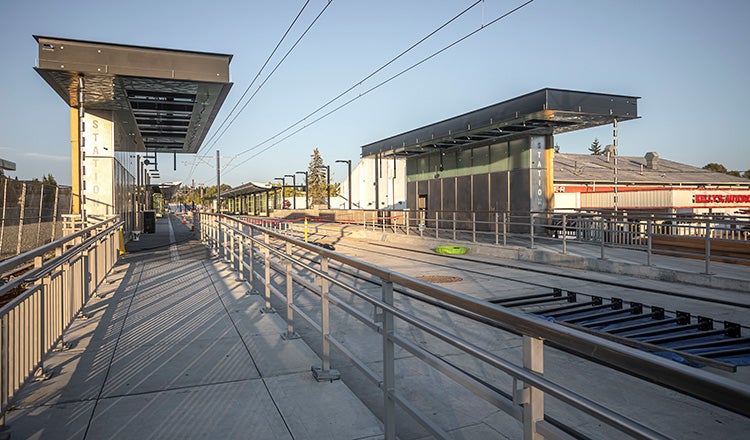
Q. You’ve managed many large and complex infrastructure construction programs. What are the major areas of risk for an agency, and what’s your biggest advice for addressing them effectively?
A. Some of the biggest risks occur from delays that are outside the contractor’s control. For example:
- Third-party impacts
- Right-of-way acquisition/handover
- Utility relocation
- Lack of meaningful stakeholder engagement
- Owner’s changes during construction
- Interface risks
The best way to manage these risks is to act before executing the construction contract. For example, when building a tunnel, we must follow the National Fire Protection Act (NFPA130) and international code, but each is subject to interpretation by the local entity with jurisdiction over building codes. It’s important to make sure the project team has an agreement on interpretation because if it changes from what is represented in the procurement documents, the owner would be the one responsible. Best practice is to have a master agreement with stakeholders, in part securing their concurrence on code interpretation before the construction contract is awarded.
Q. What are some of your best practices for interface management?
A. I love to talk about systems and interface management. I came up through the systems side and then transitioned to the delivery side, so I’m not afraid to dive into it. Construction management professionals need to embrace interface management and have a basic understanding of systems construction and delivery. Poor interface management can lead to a significant level of changes and delays in the construction phase if not actively managed throughout the delivery of any complex construction project. This is a major area of risk for any complex transit project today.
It’s important to start working on interface management in the design phase. Once again, I always push a collaborative approach. Each contract needs to have an interface manager and they need to coordinate with each other and the design team.
Interface management is a powerful tool. We create things like block diagrams that identify each of the different pieces of equipment in a specific system and their interfacing needs which then get incorporated into the detailed designs.
This is an area where building information modelling makes a huge difference. As designs progress and we have defined all of our interfaces and our conduits and routing, creating a BIM model shows us where the conflicts lie. With so many different elements being designed at the same time — civil, structural, electrical, etc. — a 3D model is a powerful tool to identify clashes.
What I’ve seen work well is when the contractor carries that BIM model from design into the construction phase and incorporates as-built changes into the model. If it’s carried forward throughout the project, especially with these hugely complex undertakings, it can be a good foundation for the agency’s asset management program once the system becomes operational.
On the construction side, I’ve found it beneficial from an integration standpoint to have the relevant contractors come out early and perform joint, in-process inspections. We want to identify issues long before concrete is being poured or drywall is being installed. Even design aspects as innocuous as anchorages can have a huge impact if there are changes between design and construction. Basic stuff can cause significant cost increases, delays and rework.
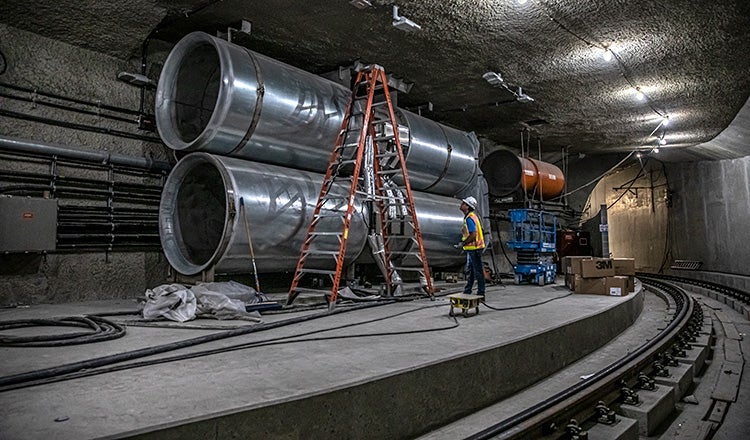
Q. Describe your contract administration philosophy. How do you keep track of all the details for a large project?
A. First of all, as construction management professionals we must know the contract — the design, specifications, terms and conditions, scope, everything. That takes a lot of discipline and time. And vitally important, the members of the team and all the project stakeholders need to be familiar with their portion of the contract, what elements of project risk they are responsible for and how their scope fits into the overall program.
The foundation of my construction management philosophy has always been a collaborative approach. I believe if we as construction management consultants collaborate with our contractors and stakeholders, we will collectively deliver a better-quality project. Collaboration is so important to good contract execution.
Change management is a critical component to good contract administration. It’s imperative that the construction management team understands the contract and the contractual response times and notice requirements in the contract. At the onset of any construction management assignment, we establish protocols to allow for timely processing of change notices and claims. We also set up the applicable matrix of authority and ensure that the right individuals are in the review and approval chain, given the magnitude of a change or claim.
Schedule management and monthly project updates are crucial to know the health of the project, to anticipate corrective actions that might be needed to bring the schedule back in line and to reverse negative trending. Effective construction managers will continually work with contractors to track schedule and completed work.
Keep an eye on the details. There are so many parts that go into good contract administration: scheduling, change management, risk management, construction safety, construction quality, submittals, Request for Informations, commissioning, safety certification, environmental, safety, permits, third-party coordination. The list goes on. The most important thing is to build a solid team that clearly understands the scope of work and takes care of the details. I don’t need to know how my team is tracking every little safety certification item, but I do want to know that they understand the work and have established good processes to monitor and control the work as the project progresses.
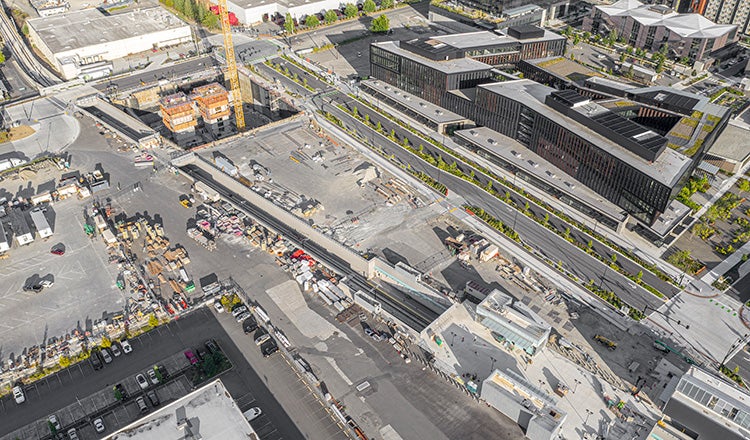
Q. What are some of your proven strategies for building trusted relationships between owners, their construction managers, contractors and project stakeholders?
A. One of the first things I do is listen. I listen to my client and try to understand their needs and concerns. I listen to the contractor to better understand their perspective on an issue.
I do my own research into an issue to come up with my own assessment and determination of how it relates to the contract requirements. This involves talking with several different sources to gain a range of perspectives. It’s so important to verify what you are hearing and to confirm that an issue is valid.
Don’t let things sit too long. I try to keep an eye out for issues that are taking longer than anticipated or hot issues that need immediate response. In both cases I find that a quick meeting with the right stakeholders, bringing all the appropriate parties together, is one of the best ways to keep a project moving. In many cases a quick, half-hour discussion is all that is needed to identify a course of action and get an issue moving toward a solution.
I’m not afraid to have tough conversations. That goes for my team, when I’m working with my client, and when I’m working with the contractor’s team. If we have gaps in our performance, then I’m going to have those conversations and we’re going to have it in a collaborative way. We’re striving to enlist engagement from all the parties.
This could mean talking to a contractor’s project manager about a challenge with their superintendent or telling a client that I don’t think their intended course of action is going to work out.
Addressing problems head-on has two benefits. One, it allows everyone to work together to solve the problem early and constructively. Two, people know where they stand with me, and that builds trust in the long term.
When I work with contractors and deliver a project for an owner, I am solution-driven. I don’t spend a lot of time looking to assess blame. It’s better to draw upon my knowledge of best practices and lessons learned to get to the root cause of the problem, find a solution and keep the project moving.
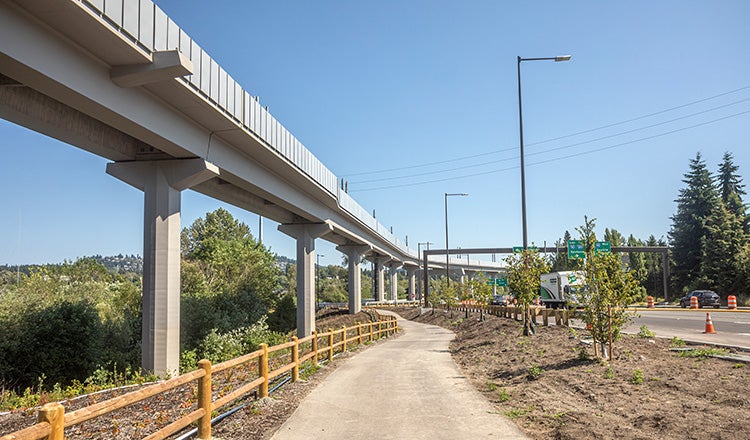
Q. How do you recruit and retain staff on your construction management projects in a very constrained labor market?
A. A lot of what I’m looking for is good construction engineers and inspectors with solid experience, who understand challenges and how to make it all come together as we progress these projects. My teams normally include a mix of backgrounds that bring diverse perspectives on contracting, design, construction management and stakeholder outreach.
I make it a personal mission to do a lot of recruiting. Often I’ll spend several hours on LinkedIn looking at different profiles for folks with good experience who want to join an exciting project and a great firm. I often send a personal email to each prospective recruit. I’m an energetic guy, I’m excited about the work I’m doing, so from there it’s easy to attract people to join our team.
I also keep an eye out for diversity as we’re building our teams. I try very hard not to hire 100 people that are just like me. A diverse workforce with different perspectives and different approaches to work creates a well-rounded team and a better product.
Our employee ownership and culture of collaboration is also a huge draw. As owners of this company we take pride in the work we’re delivering and enjoy our colleagues in the process. Those things resonate with potential hires.
Once they make that major life decision to join us, I’m intent on monitoring their job satisfaction and their professional fulfillment to make sure that well after they’ve joined us, they’re confident that it’s the best career decision they’ve ever made.
I want to talk to each of my staff about their career path. What do you want to do? What do you want to grow into? What does your future look like? I tell them that as an individual, they need to invest in themselves. And my job is to support them in doing that.
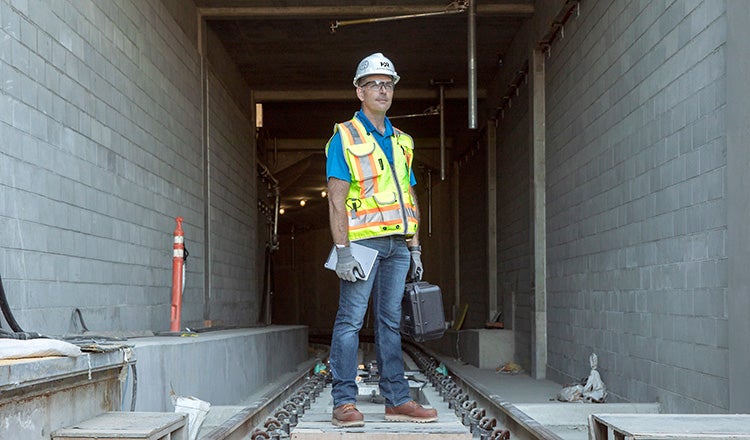
Inspiration & Advice
Q. How did you get involved in construction management?
A. It’s been a funny road. I started out as a jet engine mechanic in the Navy. After I left there, I took my associate degree and became a maintenance manager for the Cascade Passenger Rail Line in the Pacific Northwest. I earned a bachelor’s degree along the way and applied for a job as a maintenance project manager at Sound Transit. It was a long shot — I had to convince the hiring manager that there was no one more qualified to do the job than someone who’d been delivering it for the other side.
Subsequently, what I got at the time was my dream job, being the vehicle engineer in charge of light rail procurement for Sound Transit. The best part was I was part of the system integration testing of all the alignments in Sound Transit. You want to become an expert on how light rail gets delivered? You get your boots on the ground.
I loved it. I loved working with the contractor. I loved trying to work around challenges. And I figured out I was darn good at it.
And the rest was history — I just kept building on that experience, and really my career has been a series of dream jobs since.
Q. What advice do you have for someone just starting out in construction management?
A. Learn as much as you can about your job and any job that you touch on the periphery of your job. A lot of times folks have their eyes on being a manager. But I think the best managers are the ones who understand the details that go into the full delivery.
I really try to emphasize that you’re looking for building blocks that add to your knowledge base. The more solid of a foundation you have, the easier path you have to growth potential. Don’t be afraid to dig in and do the work.
Each Experts Talk interview illuminates a different aspect of transportation infrastructure planning, design and delivery. Check back regularly for new insights from the specialized experts and thought leaders behind our award-winning, full service consulting practice.




